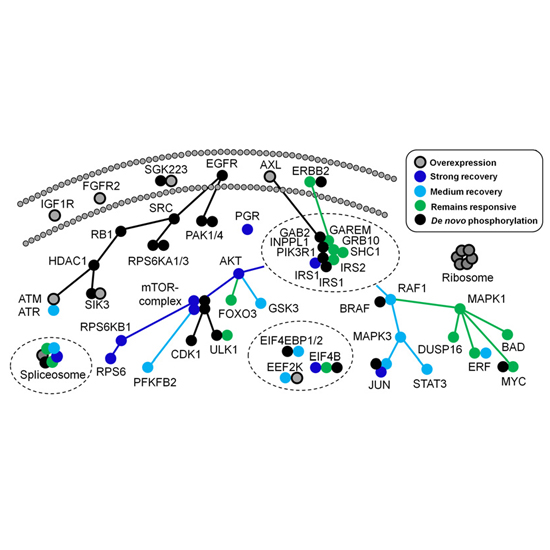Lapatinib Resistance in Breast Cancer Cells Is Accompanied by Phosphorylation-Mediated Reprogramming of Glycolysis
16-Feb-2017
American Association for Cancer Research, Volume 77, Issue 8, pp. 1842-1853 , DOI: 10.1158/0008-5472.CAN-16-2976
American Association for Cancer Research, online article
HER2/ERBB2–overexpressing breast cancers targeted effectively by the small-molecule kinase inhibitor lapatinib frequently acquire resistance to this drug. In this study, we employed explorative mass spectrometry to profile proteome, kinome, and phosphoproteome changes in an established model of lapatinib resistance to systematically investigate initial inhibitor response and subsequent reprogramming in resistance. The resulting dataset, which collectively contains quantitative data for >7,800 proteins, >300 protein kinases, and >15,000 phosphopeptides, enabled deep insight into signaling recovery and molecular reprogramming upon resistance. Our data-driven approach confirmed previously described mechanisms of resistance (e.g., AXL overexpression and PIK3 reactivation), revealed novel pharmacologically actionable targets, and confirmed the expectation of significant heterogeneity in molecular resistance drivers inducing distinct phenotypic changes. Furthermore, our approach identified an extensive and exclusively phosphorylation-mediated reprogramming of glycolytic activity, supported additionally by widespread changes of corresponding metabolites and an increased sensitivity towards glycolysis inhibition. Collectively, our multi-omic analysis offers deeper perspectives on cancer drug resistance and suggests new biomarkers and treatment options for lapatinib-resistant cancers.











